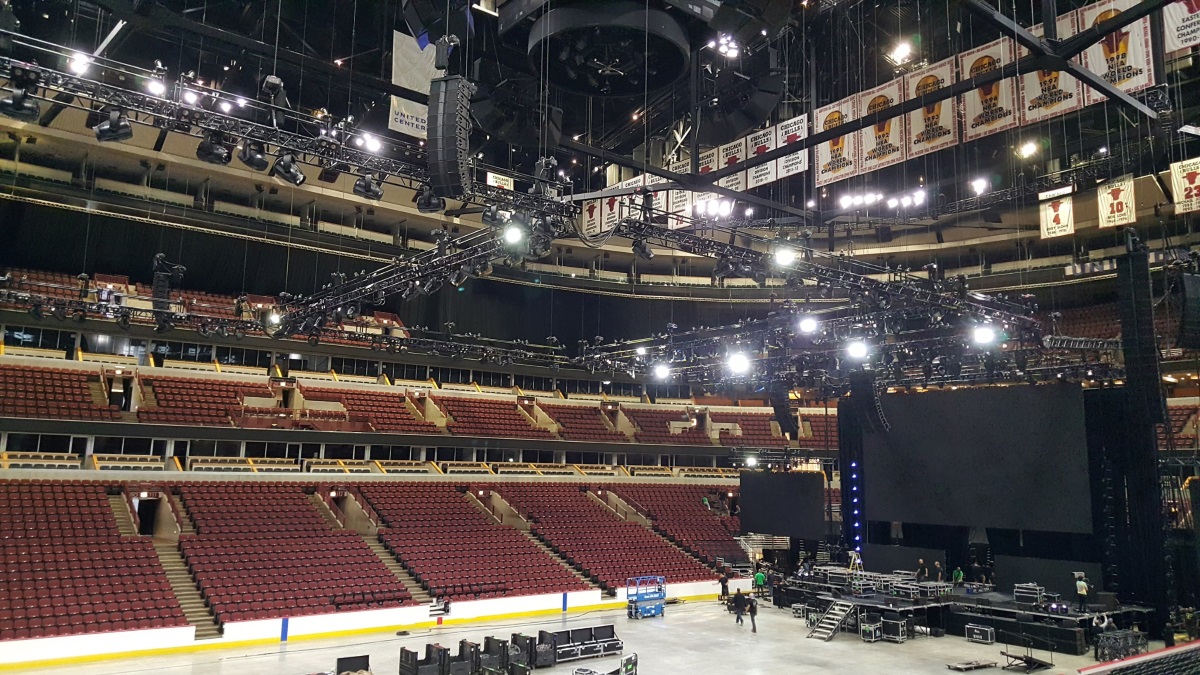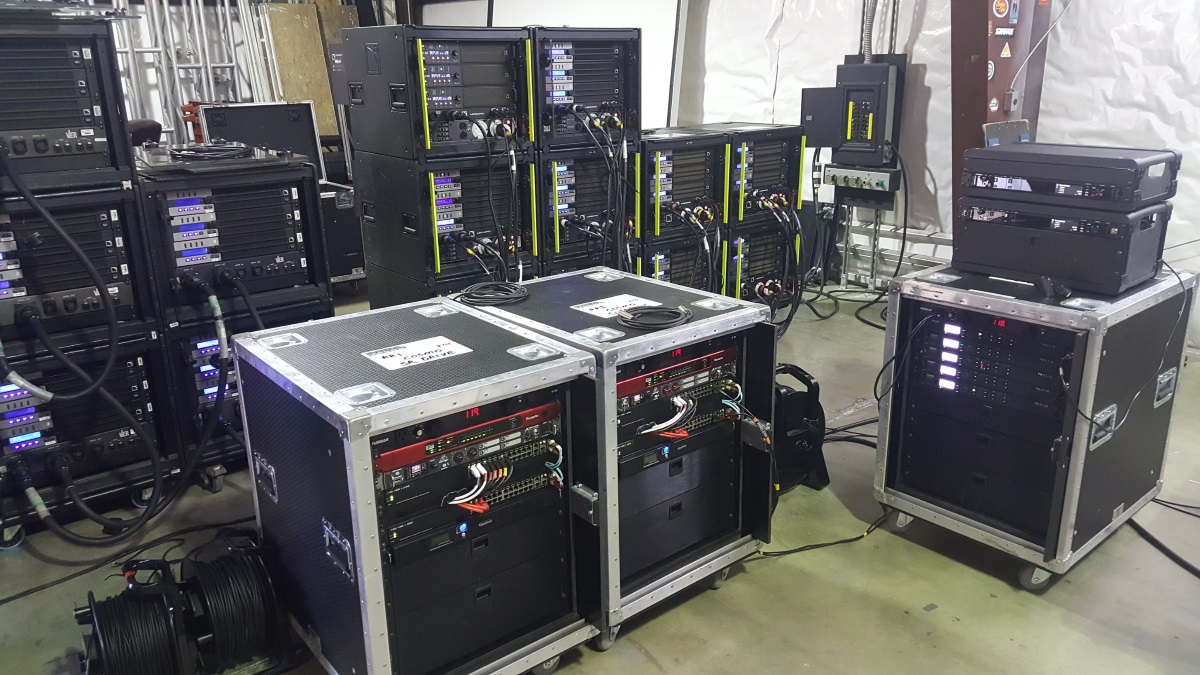
Assured Outcome
For the Robbins event, MLSound deployed 105 loudspeakers “in the air” and another 42 on the ground. One immediate problem to solve was that of distance, with more than 400 feet separating front of house from backstage, with a similar distance between the FOH control rack and stage control racks.
While these expanses could have been problematic for signal routing over analog lines, four runs of network fiber provided a more assured outcome, and without signal degradation.
With the Dante networking protocol as the backbone, MLSound linked redundant Avid Profile consoles via MADI to a Focusrite D64R MADI-to-Dante converter.
Also on the network were Dante-enabled Lake LM44 system processors, with Focusrite D16RAES3 interfaces then converting Dante to AES3 signal delivered to the L-Acoustics LA8s and LA12X amplified controllers driving the loudspeakers.
In addition, Shure ULX-D wireless microphone systems were also patched in directly via Dante, limiting A/D conversions in the signal chain. Latency was a non-issue, with a reported 1 millisecond of fixed latency across the entire network.

According to the sound team, configuring the system was a relatively simple matter because Dante devices automatically recall their last channel subscriptions. “Dante has helped us in many ways,” Slazas adds. “Our routing is all centralized in Dante Controller, and the patching remains the same each time we connect – we just plug in the Cat-5E cables. We don’t have to fumble around with sub-snakes to distribute signals anymore.”
He adds that, in his view, setting up a system using audio networking is considerably faster relative to working with analog, with many fewer cables and sources of potential failure.
“Our system has undergone some massive changes in the last few years,” he notes. “For the longest time, it had been fully analog, requiring many sub-snakes and cross-stage cables to interface with the different equipment. Sometimes it went together flawlessly, sometimes it took three hours to chase some ground related hum. We made heavy use of IL-19 isolation transformers.
“Now we run to pieces of fiber between FOH and each side of the stage and plug in a few Cat-5E cables,” he continues. “We don’t chase ground-related hum anymore, the noise floor is non-existent and the amount of copper we need to hoof around has been drastically reduced. On a bad day, the new system goes together many times faster than the old system did on a perfect day.”
